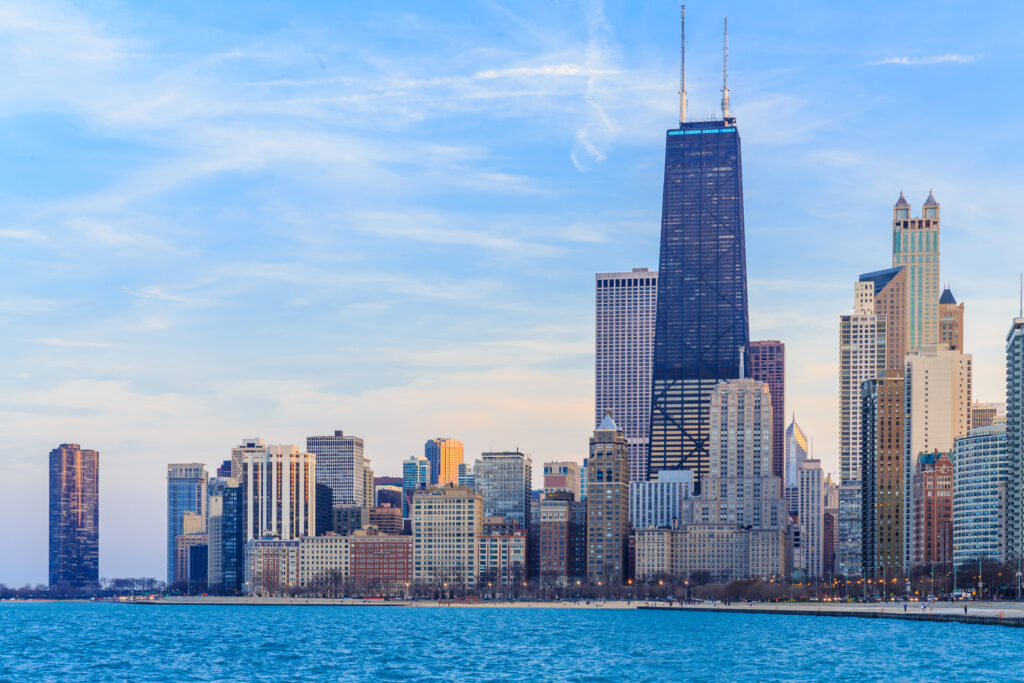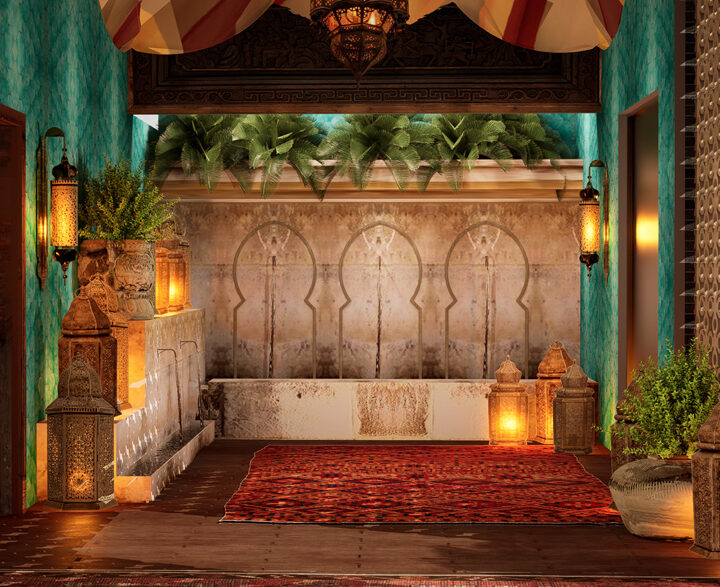Chicago Architecture and Design
- Home
- Chicago Architecture and Design

Chicago’s Architectural History
Regarded as the birthplace of the skyscraper, Chicago is the third-largest city in the United States. Sitting 176 meters above sea level on the southwestern shore of Lake Michigan, Chicago is famous for its tall buildings and blustery winter weather. It’s also got a lot of nicknames. Whether you call it The Windy City, Chi-Town, Second City, or The City of Big Shoulders, Chicago is a town that makes an impression on you.
Chicago’s architectural flavor is certainly largely defined by its skyscrapers, including The Willis Tower (formerly Sears Tower) the second tallest building in the U.S. but Chicago architecture hardly begins and ends with skyscrapers. The city is also famous for its vibrant arts scene, with institutions like the Art Institute of Chicago and a thriving theater district that includes Broadway’s longest-running American musical, the Eponymous “Chicago”.
Chiago’s architectural history is a fascinating testament to the city’s growth, resilience, and innovation. Its skyline is a living museum, reflecting various architectural styles and periods, punctuated by significant events and personalities that have shaped its design legacy.
Chicago Style and Culture
Chicago has a unique blend of metropolitan sophistication tempered with hearty, no-nonsense midwestern values. Its cultural offerings extend to its culinary scene, celebrated for deep-dish pizza and Chicago-style hot dogs. Home to one of the world’s leading research universities, the city fosters a spirit of intellectual curiosity and discovery. From its humming downtown pedestrian malls to its scenic lakefront, Chicago offers a great deal to tantalize the intrepid urban explorer and architecture enthusiast alike.
The Great Chicago Fire in 1871 was a pivotal moment in the city’s history, destroying much of the downtown area. Yet, it also set the stage for a period of rapid architectural innovation, leading to the development of the world’s first skyscraper, the Home Insurance Building, completed in 1885. Chicago’s architecture is a melting pot of styles – from Classical Revival to Art Deco, Chicago School to Modernist. The city’s design ingenuity is not confined to the exteriors but has also significantly influenced interior design, introducing open floor plans and minimalist aesthetics.
Our Favorite Examples of Chicago Architecture and Design
The Rookery Building
The Rookery Building, located in the Chicago Loop, is a masterpiece of early commercial skyscraper design. This historic office building was completed in 1888 by renowned American architects Daniel Burnham and John Root. The architectural style of The Rookery is a blend of Romanesque and Queen Anne styles, showcasing masonry and metal construction methods, making it a transitional structure in American architecture.
The building’s exterior features a weighty, substantial base with intricate details emphasizing verticality towards the top. The foundation and structure designed by John Wellborn Root exemplify his engineering acumen. Adding to its already impressive stature, Frank Lloyd Wright remodeled the building’s light court in 1905.
Standing 55 meters high, The Rookery remains one of the most important early tall office buildings in Chicago. Its unique blend of styles and architectural innovation makes it a significant landmark in the city’s architectural history.
Wrigley Building
This 1920s masterwork of Chicago architecture in the Beaux-Arts style with its French Renaissance façades and Spanish cathedral tower, is a well-known landmark to Chicago residents. The design is said to have been inspired by the Giralda tower of Seville’s Cathedral. It was part of the City Beautiful movement, a reform philosophy of North American architecture and urban planning that flourished during the 1890s and 1900s.
With its most prominent feature being its soaring clock tower and festive walls of white terra cotta, the Wrigley Building was the first skyscraper north of the river, just after the turn of the century. Charles Beersman, who led the design, gave the south building a trapezoidal body to make the most efficient use of the angular plot of land. The building earned its name as the corporate headquarters of the Wm. Wrigley Jr. Company.
Chicago Cultural Center
Another fine example of classic Chicago architecture can be found in the Chicago Cultural Center. This Beaux-Arts masterpiece features two stunning stained-glass domes as its central attraction. Completed in 1897, The Chicago Cultural Center is a stunning architectural marvel located in the heart of the city. Designed by the Boston firm Shepley, Rutan & Coolidge, the building embodies an amalgamation of neoclassical and Italian Renaissance elements.
The center’s Beaux-Arts style was influenced by the 1893 World Columbian Exposition, featuring both Greek and Roman architectural styles. The exterior is impressive, but it’s probably the interior design that makes it truly extraordinary. Its two magnificent stained-glass domes, set symmetrically in the building’s center make it quite unlike any other building in the city. Originally constructed as Chicago’s first central public library, the building was designed to impress and signify Chicago’s growth into a sophisticated metropolis.
Willis Tower (formerly Sears Tower)
No list of Chicago architectural landmarks would be complete without mentioning the city’s most famous building. Once the world’s tallest building, this 110-story skyscraper towering over the city’s Loop neighborhood is a testament to Chicago’s architectural ambition and financial might. This shimmering aluminum and steel tower complex has aged quite gracefully over the past 50 years and remains one of the finest examples of the supertall skyscraper-class buildings of the late 1960s and early 70s.
Oddly enough, the design of the Willis Tower is said to have been inspired by a pack of cigarettes. According to legend, architect Bruce Graham took out his packet of cigarettes at lunch and saw nine individual cigarettes bundled together in one hand in the pack planted the seed of an idea that would later become the Sears Tower in 1973. The tower’s recent transformation includes several nods to Chicago architecture. It features dark aluminum cladding, referencing the tower above, and terra cotta elements.
New World Design Builders and K2 Studios Merge Architecture and Design
New World Design Builders and K2 Studios is a dream team of craftspeople and artisans devoted to creating beautiful, functional architecture and design. Our works embrace a modern design ethos while remaining faithful to classic design principles.
New World Design Builders and K2 Studios merge architecture and interior design under one roof. This union allows us to create complete design solutions for our clients. Our creations feature a seamless integration of savvy interior design that compliments the surrounding architecture.
We are a full-service design firm driven by our passion for creating atmospheres where memories are made. Turn your vision into reality by partnering with our dedicated architects and designers When you’re ready to start a new design and/or construction project in Chicago or anywhere else, let’s discuss all the ways New World Design Builders can bring your architectural and design dreams to life.




